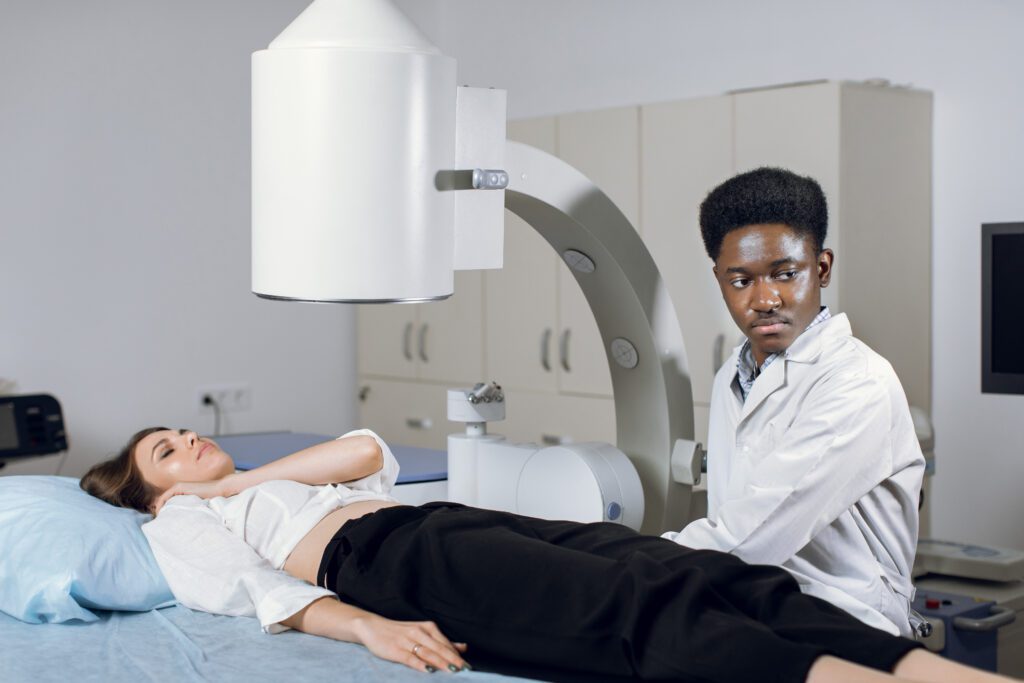Radiation Safety in Radiography: What Patients Should Know
Radiography, a critical component of modern medical diagnostics, utilizes radiation to create images of the body’s interior. While it has revolutionized the way conditions are diagnosed and treatments are planned, concerns about radiation exposure have been a topic of discussion among patients and health professionals alike. Understanding radiation safety is vital for patients undergoing or considering diagnostic imaging procedures. This blog aims to demystify the subject, offering insights into how radiation works, the risks involved, and the measures taken to ensure patient safety.
Understanding Radiation in Radiography
Radiography involves the use of X-rays, a form of electromagnetic radiation, to capture images of the internal structures of the body. These images provide invaluable information, aiding in the diagnosis and management of various conditions, from bone fractures to diseases like cancer. However, because X-rays involve ionizing radiation, which has the potential to cause cellular damage, their use is carefully regulated and monitored.
The Risks Associated With Radiation
The primary concern with ionizing radiation is its potential to damage DNA, which, in rare cases, can lead to cancer. The risk is dose-dependent; higher doses of radiation are more likely to cause harm. It’s important to note, however, that the doses used in most diagnostic radiography procedures are relatively low and the risks are minimal when compared to the benefits of accurate diagnosis and treatment.
Healthcare professionals adhere to the principle of “As Low As Reasonably Achievable” (ALARA) to minimize exposure. This principle ensures that the smallest amount of radiation necessary to obtain a quality image is used, reducing the risk to patients.
Safety Measures and Protocols
The field of radiography is governed by stringent safety standards and protocols to protect patients from unnecessary radiation. These measures include:
Justification
Each radiographic examination must be medically justified, ensuring that the benefits outweigh the risks. This involves a careful review of the patient’s medical history and current health condition to determine the necessity of the radiographic procedure. Healthcare providers must consider alternative diagnostic methods that do not involve radiation exposure when appropriate. The decision to proceed with radiography is often made collaboratively by a multidisciplinary team, including radiologists, to ensure that every examination is essential for the patient’s diagnosis or treatment plan.
Optimization
Techniques and equipment are optimized to use the lowest radiation dose possible while achieving the best image quality. This includes selecting the appropriate imaging parameters, such as exposure time and X-ray beam collimation, to limit the radiation dose. Advances in radiographic technology, including digital imaging and software enhancements, allow for significant dose reduction without compromising image quality. Optimization also involves tailoring the radiographic technique to the size and specific needs of the patient, further minimizing unnecessary exposure.
Shielding
Protective shielding, such as lead aprons or thyroid collars, is often used to protect sensitive areas of the body from exposure. The use of these protective devices is carefully planned to ensure that they do not interfere with the diagnostic quality of the images. In pediatric radiography, additional precautions are taken to shield the gonads and other sensitive tissues, recognizing the increased sensitivity of children to radiation. The placement and use of shielding are determined based on the specific area being imaged and the patient’s body habitus.
Training and Certification
Radiographers undergo extensive training and certification to ensure they are equipped to use radiographic equipment safely and effectively. This education includes not only technical skills but also a deep understanding of radiation physics, biology, and safety principles. Continuing education is a requirement for radiographers to maintain their certification, ensuring they remain up-to-date with the latest safety protocols and technological advancements. Professional bodies and regulatory agencies set the standards for training and certification, emphasizing the importance of competency in radiation protection.
Equipment Maintenance and Calibration
Regular maintenance and calibration of radiographic equipment are performed to ensure optimal performance and safety. This includes routine checks to verify that the equipment is functioning within specified limits and that radiation doses are accurately controlled. Calibration ensures that the equipment produces the expected amount of radiation for a given setting, minimizing the risk of overexposure. A comprehensive quality assurance program, involving physicists and engineers, supports these efforts to ensure that every piece of radiographic equipment is reliable, safe, and effective for patient care.
Patient Empowerment and Communication
Patients play a crucial role in their own safety and should feel empowered to ask questions about their radiographic examinations. Inquiring about the necessity of the procedure, the expected radiation dose, and the safety measures in place are all reasonable questions that can help patients make informed decisions about their care.
Communication between healthcare providers and patients regarding radiation safety is also essential. Providers should offer clear explanations about the procedure, discuss the benefits and risks, and address any concerns patients may have. This open dialogue can help alleviate anxiety and ensure that patients are comfortable with their care plan.
Special Considerations for Vulnerable Populations
Certain populations, such as pregnant women and children, are more sensitive to the effects of radiation. In these cases, alternative diagnostic methods that do not involve ionizing radiation, such as ultrasound or MRI, may be considered. If radiography is necessary, extra precautions are taken to minimize exposure and protect the developing fetus or child.
Advancements in Radiographic Technology
Technological advancements have significantly improved the safety and efficiency of radiographic procedures. Digital radiography, for example, often requires lower doses of radiation than traditional film-based methods. Innovations in imaging techniques and equipment design continue to reduce the amount of radiation patients are exposed to, without compromising the quality of diagnostic information.

Stay Safe Throughout the Radiography Process
Radiation safety in radiography is a priority for healthcare providers, and significant measures are in place to ensure that the benefits of radiographic examinations far outweigh the risks. Patients should be informed and proactive in their healthcare, asking questions and communicating openly with their healthcare team about any concerns regarding radiation exposure.
Understanding the safety protocols, the efforts to minimize radiation doses, and the importance of radiographic imaging in medical diagnosis can help patients navigate their healthcare experiences with confidence. As technology advances, the commitment to patient safety and the effectiveness of diagnostic radiography continues to improve, ensuring that patients receive the best possible care while minimizing risks.
Check out our Clinica Familiar Amistad blog to learn more about professional healthcare services for the whole family.




Simply wanted to let you know that your article is phenomenal. The clarity of your post is impeccable, and I could tell you are an authority on the subject. Permission granted, I would like to subscribe to your feed in order to be notified of future posts. Many thanks, and please keep up the excellent work.
Simply desire to say your article is as surprising The clearness in your post is simply excellent and i could assume you are an expert on this subject Fine with your permission let me to grab your feed to keep up to date with forthcoming post Thanks a million and please carry on the gratifying work